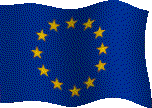SUBAT

SUPPORTED BY THE 6TH FRAMEWORK PROGRAMME
Backgrounds of the project
By the end of 2004 the Commission is required to provide report on the possibility to maintain, or not, cadmium, in the exemption list of Directive 2000/53 on End-of-Life Vehicles. The SUBAT proposal aims to make a comprehensive and complete assessment of commercially available and forthcoming battery technologies in the world, including Ni-Cd, on the basis of:
- a technical assessment comparing their performances for full EV and HEV (specific energy, specific power, proven cycle life and calendar life, life cycle cost analysis, operation at extreme temperature, charge acceptance, maintenance issues, safety, energetical efficiency of the battery systems, availability of recycling process at industrial stage, operation during applications). SUBAT will also take into account the status of these batteries as to their availability as commercial products.
- an environmental assessment in order to be able to give them an environmental score which can designate them as being a sustainable solution or not. A life-cycle-analysis approach will investigate availability of primary materials, environmental impact of extraction and manufacturing of the battery, emissions from the battery during use, release of components in case of accident, recycling of active materials, production of non-recyclable waste and environmental impact of recycling processes.
- an economical assessment with both a micro-economical analysis of production, manufacturing cost of the batteries, forecast cost for the consumers and a macro-economical study to take into account the position of battery manufacturers on the global market, assessing European vs. non-European products and influence on the European trade balance.
Through this multidisciplinary approach, SUBAT will allow to define an overall view of all aspects of the automotive battery market, in order to provide the Commission with a valuable policy support tool that will assist in tracing the pathways for the sustainable transport of the future.